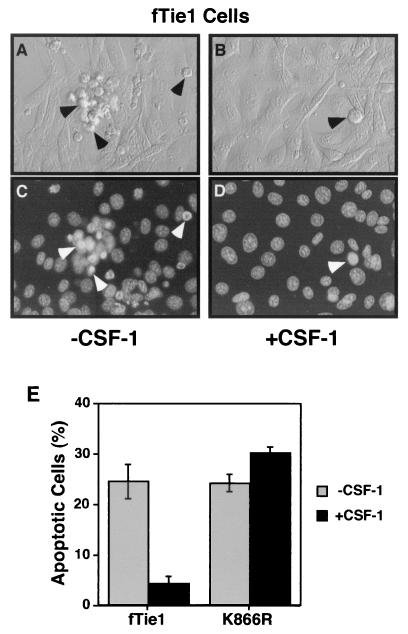FIG. 5.
Tie1 blocks UV irradiation-induced apoptosis. NIH 3T3 cells expressing fTie1.13 (wild-type) or the kinase-inactive mutant (K866R) were grown 24 h in 60-mm-diameter dishes and were then serum starved 15 h in the absence or presence of CSF-1 (500 ng/ml). The cells were then UV irradiated with 1,200 J/m2, stained with Hoechst 33342 (10 μg/ml) and propidium iodide (2.5 μg/ml), and evaluated by phase-contrast (A and B) and fluorescence microscopy (C and D). Untreated fTie1 cells (A and C) began to display morphological characteristics of apoptosis, including membrane blebbing and nuclear condensation (arrowheads), as early as 1 h after UV irradiation, whereas CSF-1-treated fTie1 cells (B and D) remained viable. (E) Quantification of apoptosis following UV irradiation. The number of apoptotic nuclei was counted after Hoechst staining and expressed as the percentage of total nuclei ± standard error of the mean. CSF-1 treatment significantly decreased apoptosis of wild-type cells but not of K866R mutant cells.

